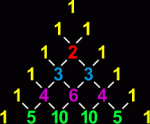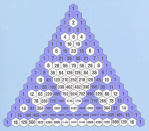Blogging was a very new experience for me as I don’t have Face book or twitter account and mainly only use Email for work until this year. This class has not only taught me how to teacher Algebra to my students but also has taught me a lot about using the computer. I was able to learn how to access my friend’s blogs though my account and make comments. I still don’t understand fully the use of categorizing and tagging the blog as it doesn’t group like categories together. I do understand the difference between a page and a new blog but don’t know if there is etiquette for use. Adding pictures was frustrating as it wouldn’t accept them unless they were saved as web page. Also diagrams I drew using shapes were impossible to copy. Blogging is a good way to communicate and share information probably better than in a classroom setting because you read everyone’s assignment and comments, and can add comments yourself, going away with a lot of ideas. In the classroom there just isn’t enough time for all of this interaction. This class has helped me see the big picture of math beyond just being able to do the computations. Through this class I have learned that math can be an interactive hands on class that can be relate to real world living. This is something I am very apprehensive about in becoming a math teacher because I have taught a FACS for 32 years. I found the entire class very interesting, although I think I enjoyed the linear equations and patterns the best. For the 1st time I was able to relate to word problems as they were related to patterns which make it come to life for me. These were skills I apply in everyday life without realizing the math concept involved. I did like and see the value to journals and would like to have students do them in a blog. Blogging them might reduce the resistance that the students have towards writing in math. I don’t know the district stand on Blogging, but they do allow Edmodo, which seems very singular but I think blogging is safer. I will also continue to use my blog to access resources and store others as I see my entire blog as a resource for teaching math.





